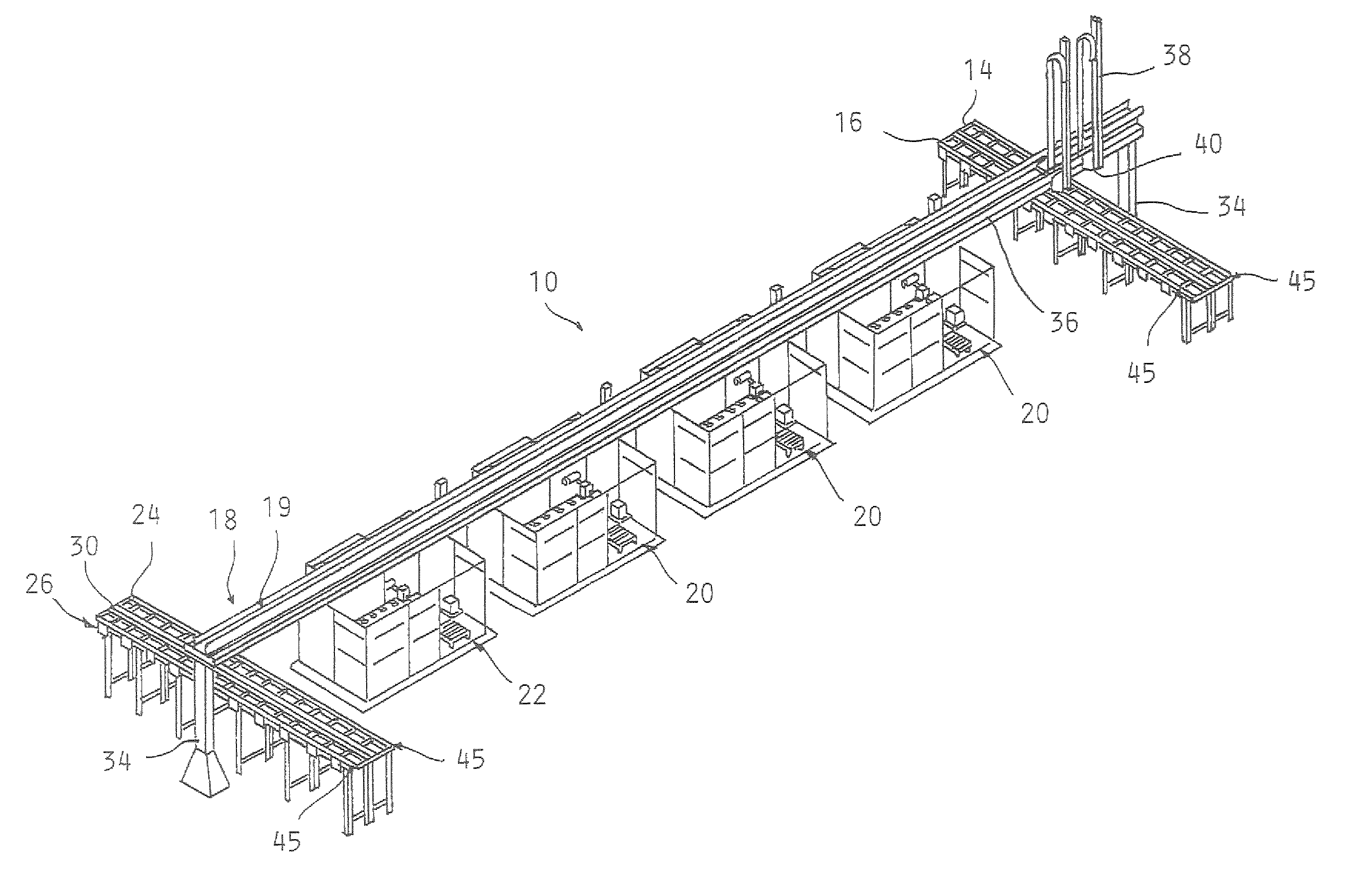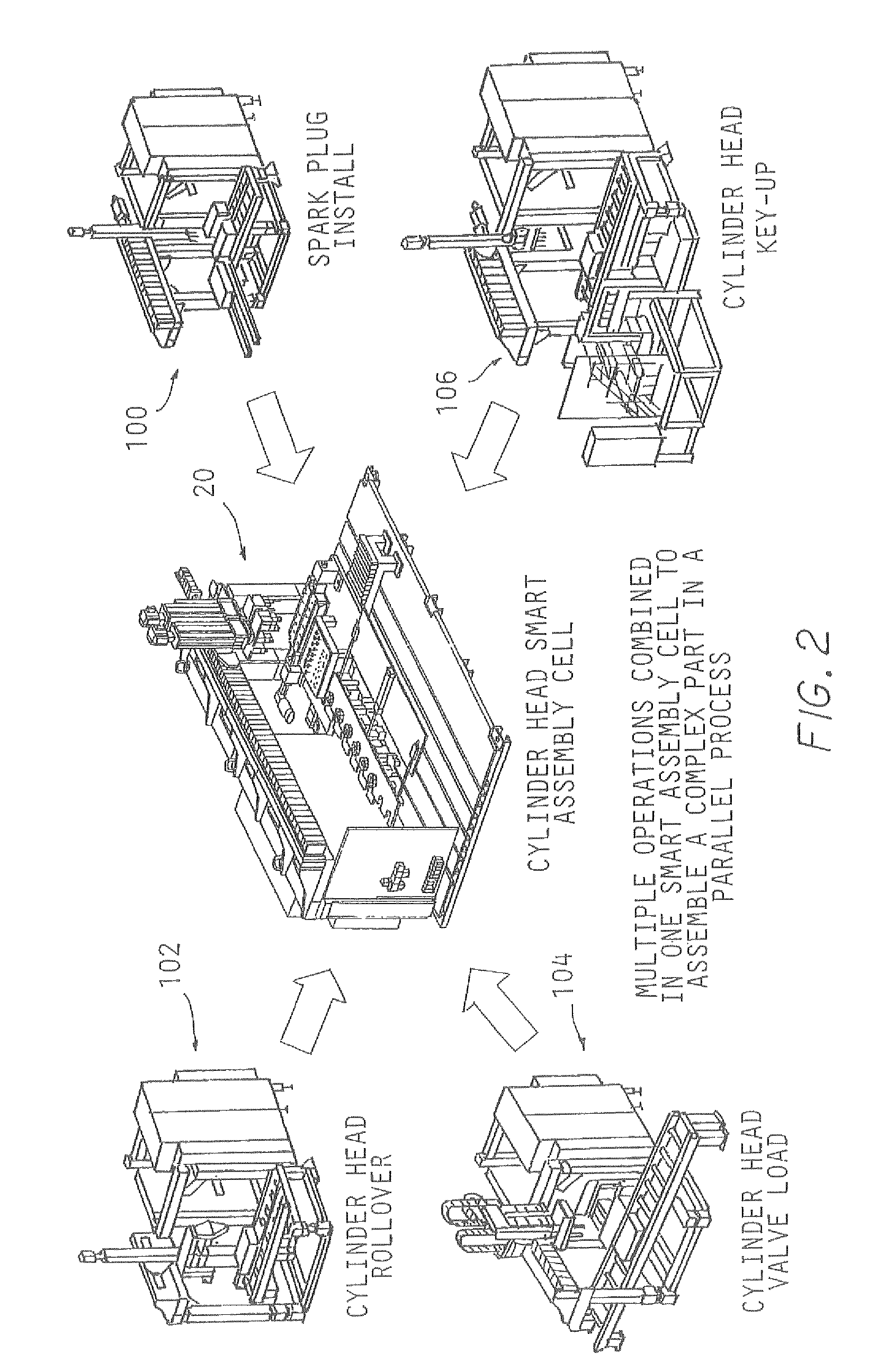Method and apparatus for assembling a complex product in a parallel process system
a technology of parallel process and assembly line, applied in the direction of total factory control, programme control, electric controller, etc., can solve the problems of inefficiency of assembly lines, inability to utilize assembly lines to manufacture any component of automobiles, and inability to use particular assembly lines without major retooling
- Summary
- Abstract
- Description
- Claims
- Application Information
AI Technical Summary
Benefits of technology
Problems solved by technology
Method used
Image
Examples
Embodiment Construction
[0046]Referring to the drawings, the present invention will now be described in detail with reference to the disclosed embodiments.
[0047]FIGS. 3-14 illustrate a method and apparatus 10 for assembling a complex product 12 in a parallel process system of the present invention. The method and apparatus 10 for assembling the complex product 12 provides a loading station 13 having a part delivery system 14 and a kit delivery system 16 that deliver the necessary components to the apparatus 10 of the present invention. A transport system 18, which may include, but is not limited to, an overhead gantry or a robot system, extends over the length of the apparatus 10 and independently picks and carries the components from the part delivery system 14 and kit delivery system 16 of the loading station 13 to one of a plurality of similar, computerized assembly cells or workstations 20. In the alternative, the loading and unloading of the components into the assembly cells 20 may be done manually. ...
PUM
 Login to View More
Login to View More Abstract
Description
Claims
Application Information
 Login to View More
Login to View More - R&D
- Intellectual Property
- Life Sciences
- Materials
- Tech Scout
- Unparalleled Data Quality
- Higher Quality Content
- 60% Fewer Hallucinations
Browse by: Latest US Patents, China's latest patents, Technical Efficacy Thesaurus, Application Domain, Technology Topic, Popular Technical Reports.
© 2025 PatSnap. All rights reserved.Legal|Privacy policy|Modern Slavery Act Transparency Statement|Sitemap|About US| Contact US: help@patsnap.com



